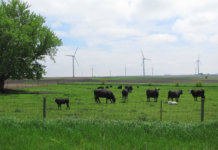The U.S. Department of Energy (DOE) and the U.S. Department of Commerce (DOC) have announced a new agreement to further collaboration between the agencies on renewable energy modeling and weather forecasting, which will help enable the nation's renewable energy resources to be used more effectively by business and entrepreneurs.
The memorandum of understanding will encourage the two agencies to work together to develop and disseminate weather and climate information needed for renewable energy technologies that are dependent on short-term weather and longer-term climate trends.
Better information on weather patterns and improved modeling of the variability of the wind, sun, water, ocean currents and other sources of renewable energy will ultimately increase the country's ability to efficiently and reliably integrate renewable energy into the electrical grid.
The agreement builds on reports from both agencies that recognize the need for improved meteorological, oceanic, and climatological observations, modeling, and forecasting to expand the efficient use of renewable energy sources and further integrate these energy sources into the U.S. energy system.
The partnership will help renewable energy system designers, operators and electric power system administrators in improving the cost-effectiveness and reliability of weather-dependent renewable energy technologies.
The collaboration includes a working group from the DOE's Office of Energy Efficiency and Renewable Energy and the DOC's National Oceanic and Atmospheric Administration that will identify areas for continued focus and research and help lay out next steps for improving the efficiency of renewable resources and better integrating renewable energy sources into the electrical grid.
The group will produce an action plan in the coming months that will address the following:
– Improving renewable resource characterization models and methodologies for optimizing system reliability and performance;
– Advancing meteorological and oceanic forecasting technologies, models and methodologies;
– Defining national weather and oceanic monitoring systems needed to support renewable energy;
– Predicting climate effects on renewable energy resources; and
– Coordinating both public- and private-sector contributions to addressing renewable resource needs.
SOURCE: U.S. Department of Energy



